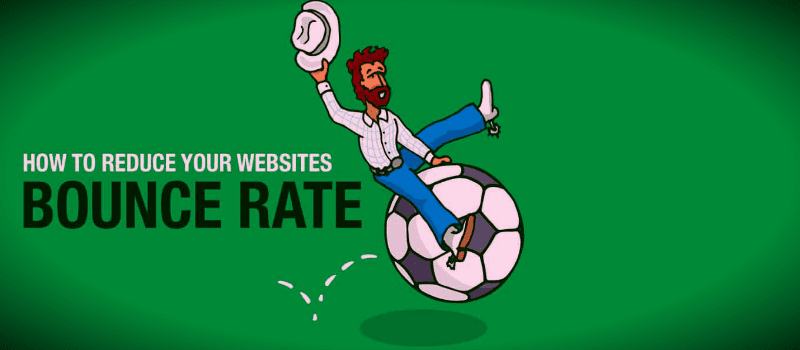The rejection rate of a website/blog is the equivalent of kryptonite for Superman. While not deadly, rejection is a frustrating reality for most blog/site owners.
The well-known web analytics firm, KISSmetrics, did a survey and found that the average rejection rate of a site is 40.5%. But depending on your industry, you can see something different: retail sites get a rate of 20-40%, content sites get 40-60%, service sites are between 10-30% etc! Many of these rejections come from new visitors, who are on your site/blog for the first time.
Generating blogs is in the niche of content, and researching on rejection metrics on blogs specifically, I saw that rates are between 40% to 80% or more!
Tip 1: One of the best ways to analyze your metrics is to see your bounce rate through Google analytics. I use the very good free WordPress plugin called Google Analytics Dashboard for WP where you can analyze everything through the WordPress panel.
Tip 2: Addthis is a tool that offers good options for you to lower the bounce rate on your blog. Check out by clicking on some of the content links.
An important point that you should consider on your blog: Always seek to improve your bounce rates, that is, decrease as much as you can. I was able to decrease by more than 10% in less than 1 month, and I’m improving even more!
While bounce rates are disappointing, they are also an indicator that something can (and should) be corrected and improved on your site. Whether it’s simple navigation changes, layout design or targeting efforts.
Here are some things you can do right away to reduce your bounce rate:
1. Focus on attracting the right audience
Keyword optimization is a crucial part of driving the right users to your website/blog. But make sure that you are not attracting types of WRONG users. Be aware of who your visitors should be and deliver content that speaks about their needs and interests.
For example, if you sell shoes, optimize for keywords related to shoes. The goal is that visitors looking for shoes are happy with their results if you are delivering on the promise of SEO that you do, actually selling shoes.
Do not optimize for socks and shoelaces unless you also sell it. It is a waste of your work on SEO and the time of your visitors – and yet you will have an increase in your bounce rate.
If you discover that your bounce rate is high, particularly on your homepage or important landing pages, take a look at your keywords and make some specific changes.
2. Reconsider the navigation of your website
Rejections happen when a visitor comes to your site and leaves before clicking another page. This can happen because they consumed the content they came for, and decided to leave, or because they did not find what they were looking for on the page. So how do you involve visitors beyond your first viewed page?
Start by presenting your homepage and browsing, first and foremost, with your visitors in mind. Think about what their greatest interest is. Make the best use of your space – balance common spaces with common sense, and make your site as simple as possible. Use pictures to help convey your point of view or product and use large calls to actions.
It has a saying that says: much smaller times is more! Look for navigation simplicity in your project.
The navigation should be direct and simple (Hint: Preferably do not use submenus). The goal is to create an environment that is clearly navigable to take your visitors in the right direction.
3. Show targeted content to visitors for the first time
Just as you would with a building material store, for example, you can and should greet new visitors. You can engage visitors who are on the site for the first time by using audience tools which allow you to display a different message for different types of users.
The best practice is to show targeted messages to visitors when they show an intention to leave your blog, which encourages them to take action without interrupting their content experience.
Two good tools you can use to do this is Optin Monster and Ninja Popup.
4. Use content recommendations to increase engagement
Further encourage engagement with the site through the use of content recommendation tools, which use a visitor’s online activity and popular content to highlight relevant content and encourage the next click.
We’ve seen that custom content recommendations (vs. non-personalized recommendations) drive 50% higher clickthrough rates.
5. Be Mobile Friendly (Perfect View Through Mobile)
More than half of all Internet users now consume content on their mobile devices.
If your site is not yet mobile optimized, you’re begging for high bounce rates. When building or updating a website, all owners now need to keep mobile users in mind.
There are over a billion websites available on the web and if yours is difficult to navigate on an iPhone or Android, your visitors (especially the new ones) will leave quickly.
Are you looking to reduce your bounce rate? Tell me in the comments below what worked best for you, and which of those strategies are you excited to use in the future?








